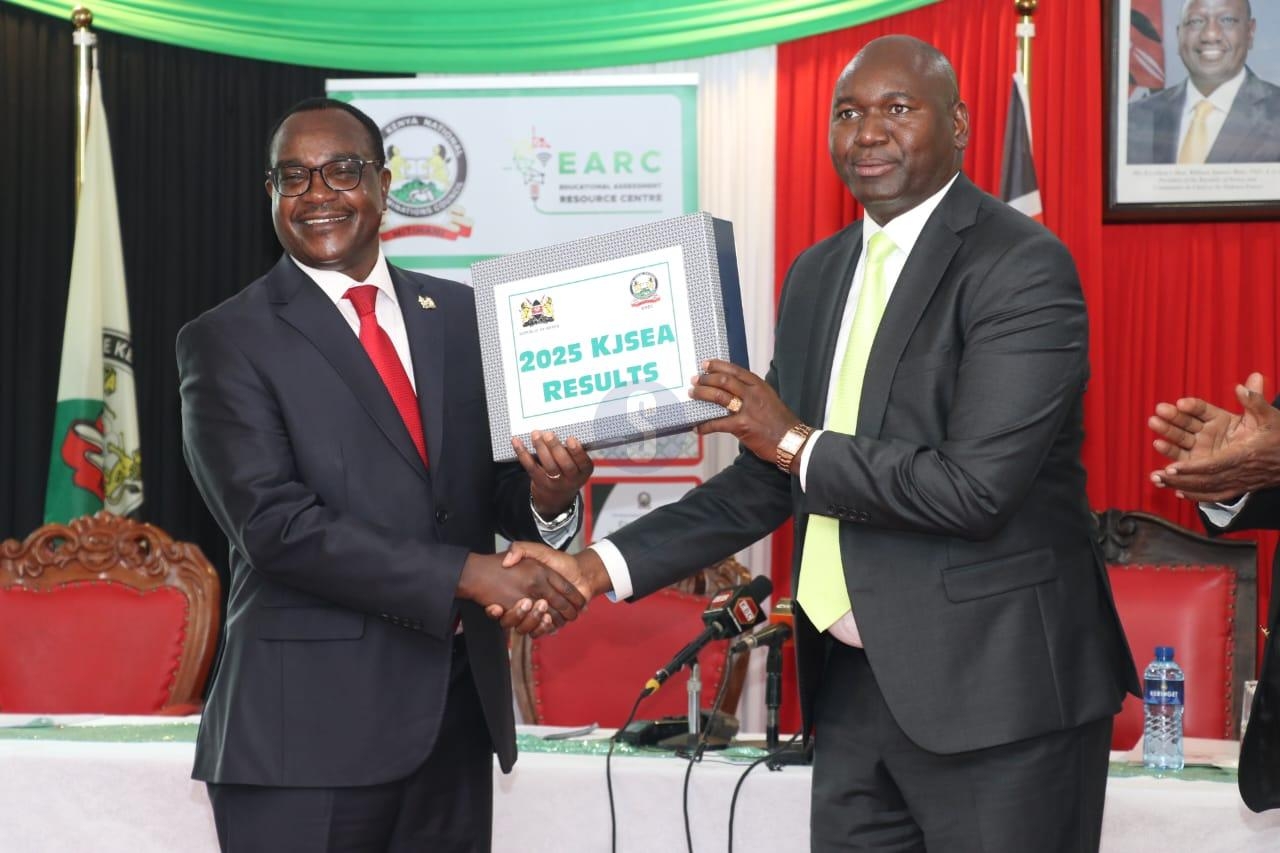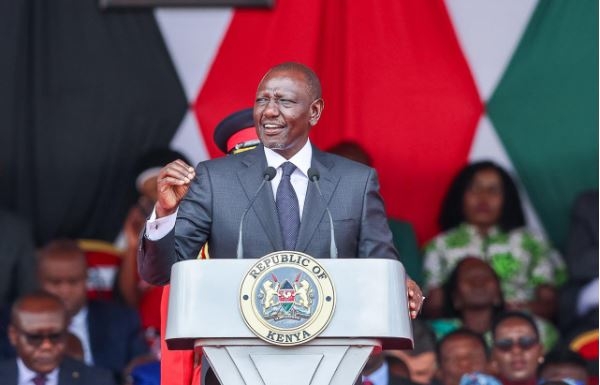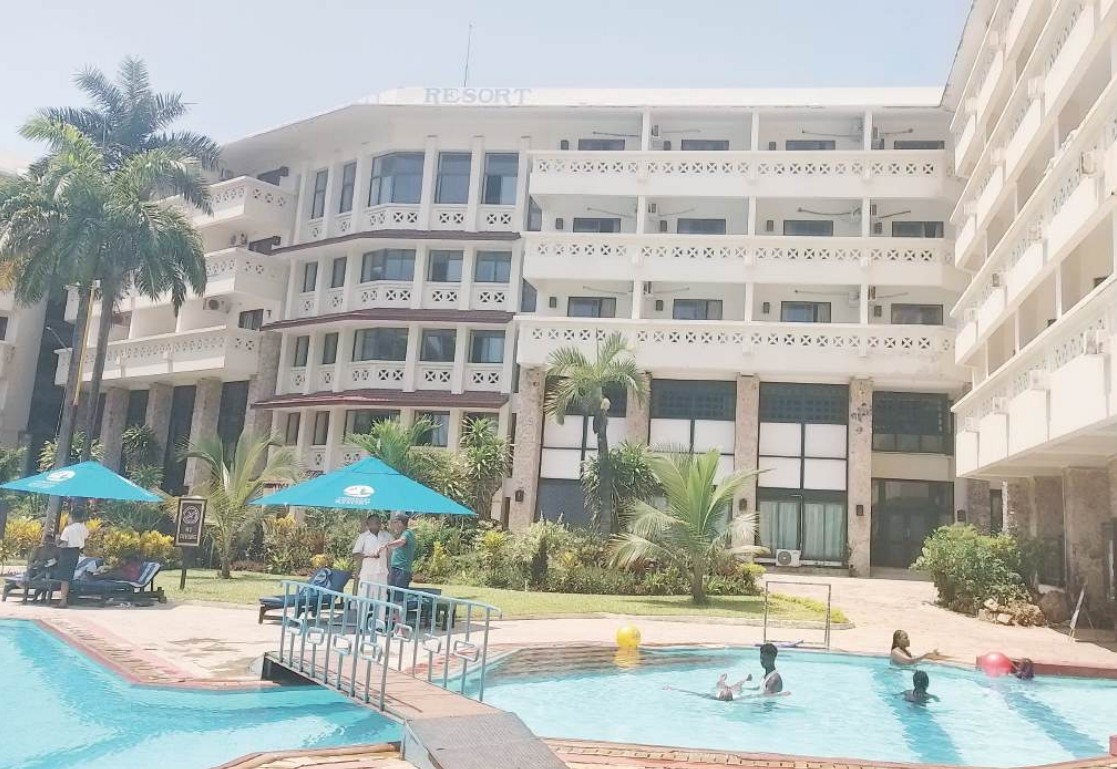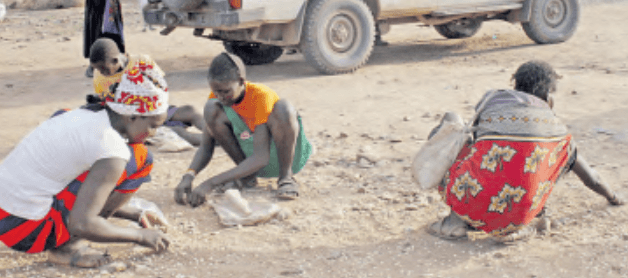
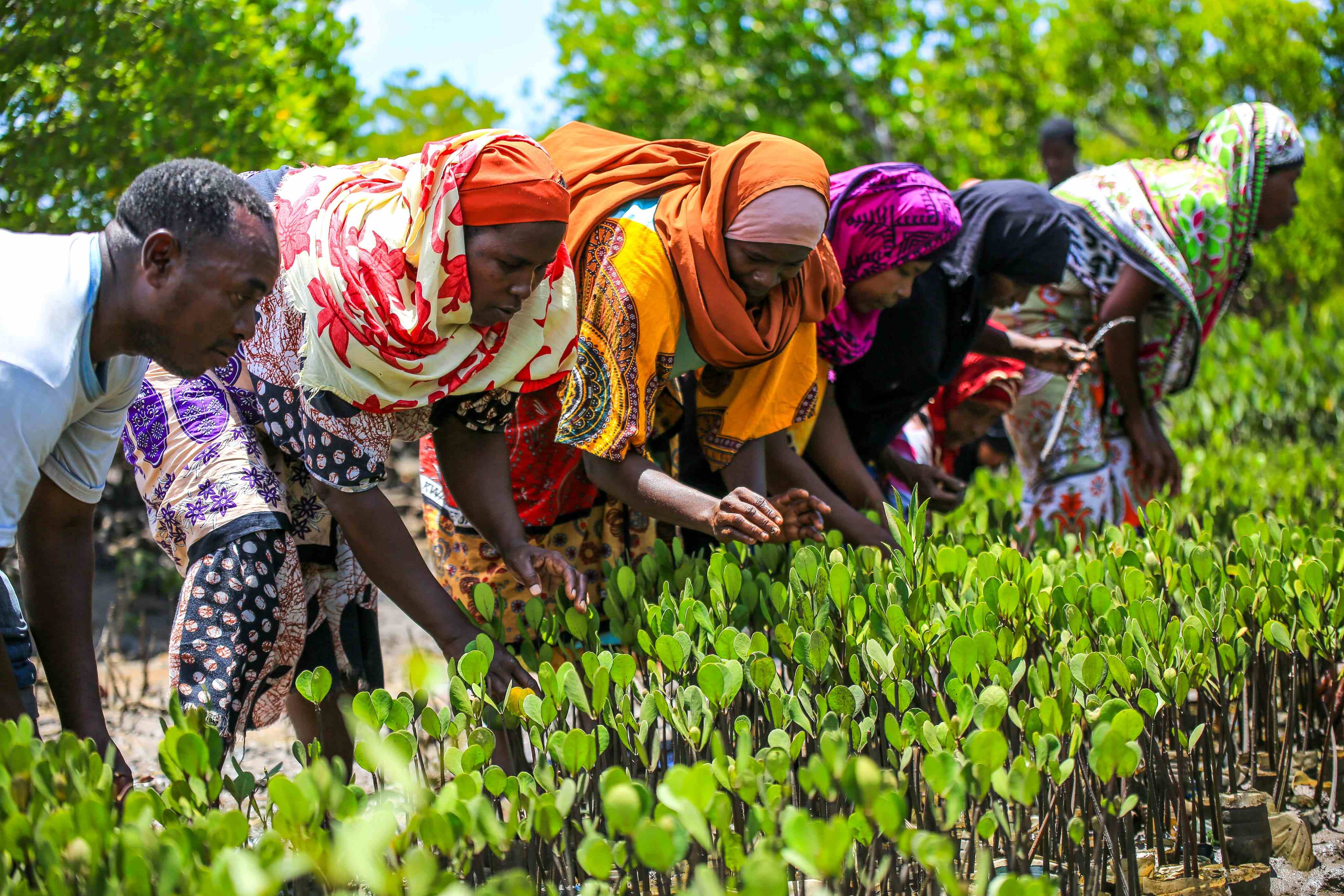 Majoreni women planting mangrove trees at
Majoreni in Lunga Lunga, Kwale on Friday / JOHN CHESOLI
Majoreni women planting mangrove trees at
Majoreni in Lunga Lunga, Kwale on Friday / JOHN CHESOLI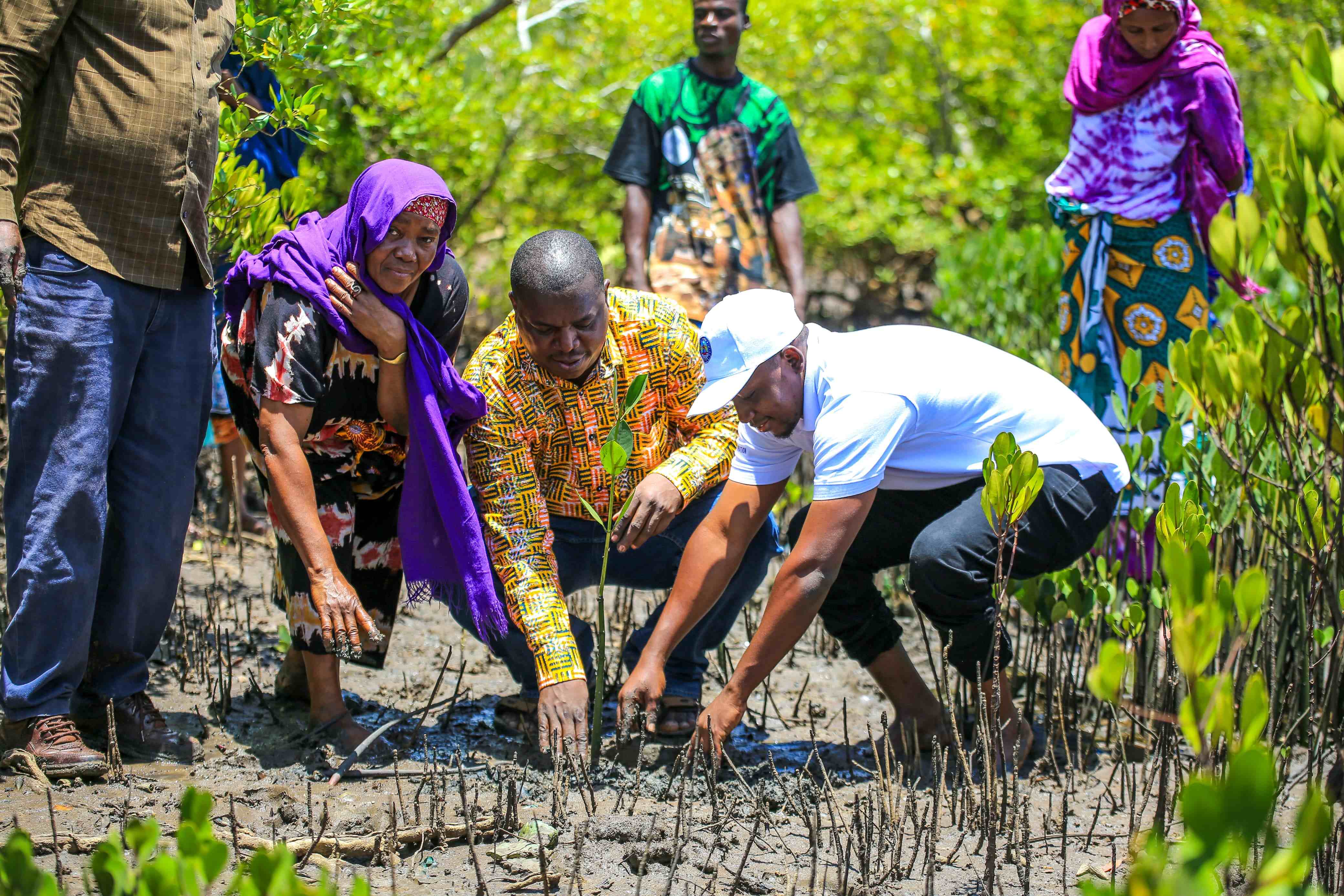 KPA corporate communication manager David
Buchere [C] at Majoreni in Lunga Lunga, Kwale on Friday / JOHN CHESOLI
KPA corporate communication manager David
Buchere [C] at Majoreni in Lunga Lunga, Kwale on Friday / JOHN CHESOLI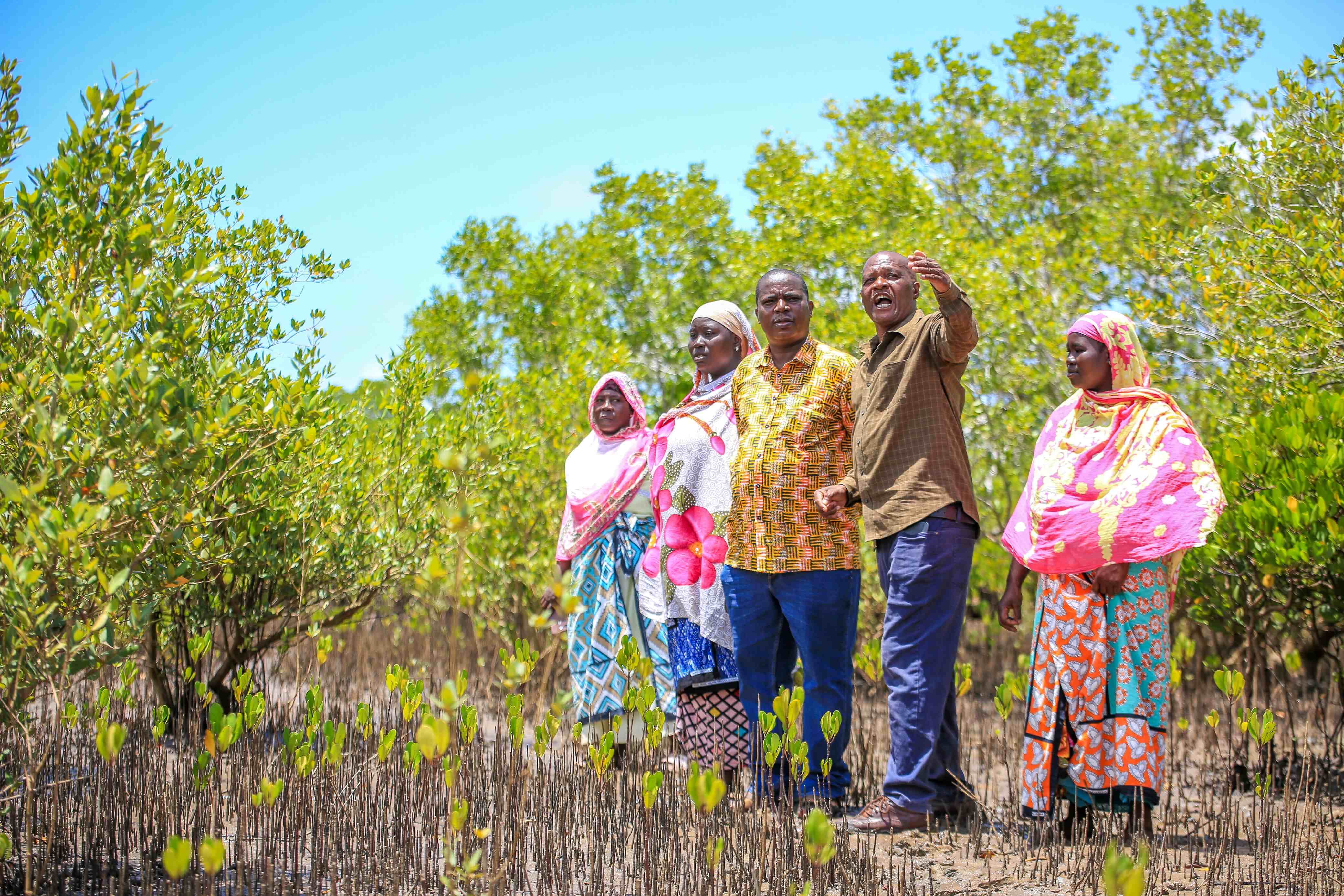 KPA corporate communication manager David
Buchere [C] and Pongwe Kidimu Community Forest Association chair Mshemanga Hamisi
at Majoreni in Lunga Lunga, Kwale on Friday / JOHN CHESOLI
KPA corporate communication manager David
Buchere [C] and Pongwe Kidimu Community Forest Association chair Mshemanga Hamisi
at Majoreni in Lunga Lunga, Kwale on Friday / JOHN CHESOLIMajoreni residents in Lunga Lunga sub-county, Kwale
county, on Friday celebrated the recognition of their efforts in the
restoration of a degraded area by planting mangrove trees.
They planted 10,000 mangrove trees in 2023, after
funding by Kenya Ports Authority as their Corporate Social Responsibility
exercise.
On Thursday, that effort by the 823 members of the
Pongwe Kidimu Community Forest Association was recognized globally after the
KPA bagged the International Association of Ports and Habours (IAPH)
Sustainability Award in Kobe, Japan.
KPA beat over 500 other ports and habours globally
to the award.
BUT HOW DID THAT HAPPEN?
Mshemanga Hamisi, chair of the Pongwe Kidimu
Community Forest Association, said Majoreni area is among 27 user groups,
majority of whom are women, whom he credits for the win.
“Out of the 823 members, men are only 227. The
rest are women. And we can see the blessings that women bring,” Hamisi said on
Friday.
The group mostly works on restoration of mangroves
in areas that have been degraded for one reason or another.
“Where we stand, 50 years ago, it was sand flat.
There was no tree and people we replaying football here.
“However, when the natural regeneration started,
the community started growing trees here, Hamisi said.
He said the restoration project has helped them
get income through the selling of nursery trees.
The project has also increased fish stocks in the
area with fishermen now catching more fish because mangroves are fish breeding
areas.
“This means the more the mangroves, the more fish
are available for fishing, which eventually improves the economy if this area,”
Hamisi said on Friday.
He said this is despite having an increased number
of fishermen in the area because the fishing sector does not necessarily need a
lot of classroom knowledge.
The mangroves have helped break winds from the
sea, meaning whenever there are cyclones or any other adverse weather condition
from the sea, it does not affect the land as much as it would have without
mangroves.
The 10,000 mangrove trees restored slightly more
than one hectare of degraded land, although Hamisi said more needs to be done
to restore more areas.
He called on more stakeholders to come up with
restoration initiatives to ensure all the sand flat areas are restored by
mangrove trees.
“We appreciate that the world has seen the work we
do and in the process has awarded KPA for their efforts. Mangroves take up
carbon dioxide from the atmosphere 10 times more than other trees,” Hamisi
said.
He said with new technologies emerging, there is a
guarantee of mangroves growing unlike in the past where planting a mangrove
tree was a 50/50 affair.
“One of the biggest things that happened is the
enlightenment of the people about mangroves. If there was no knowledge, the
area would have degraded even worse than before,” Hamisi said.
He said they appreciate that the communities in
Kwale, unlike in Lamu county, do not do mangrove harvesting, resulting in
minimal degradation.
“The only challenge we have is that men are not
participating in these kinds of activities,” Hamisi said.
He also noted that the mangrove nurseries use cut
plastic bottles as pots for the growing of the seedlings.
“We use plastic bottles for the nursery seedlings
which, we know, is not healthy. Because now there are places you will find
eight to ten tonnes of plastic bottles. We know it is not healthy to use
plastic bottles but now it is the only option,” Hamisi.
He called on the government and other stakeholders
to provide pots for nursery seedlings.
Majoreni area has 11 conservation groups, which
have helped sensitize the community on the importance of mangrove trees.
“That is why even when a tree dies, it is not cut
for firewood in this area. It is left there to form manure for the other
growing trees,” Hamisi said.
KPA corporate communication manager David Buchere said
the KPA is collaborating with other institutions, especially the Kenya Forest
Service and the Community Forest Associations to align with the green port
policy.
He said KPA is also working to ensure President
William Ruto’s 15 billion trees planted by 2032 is achieved.
So far, the authority has planted some 521,000
trees since 2019, across the Coast region.
“This year, our target is to plant another
500,000. The last time I checked, this month of October, we have planned to
plant 300,000,” Buchere said.
Other areas where KPA has planted mangrove trees
include Tudor Creek in Mombasa, Dongo Kundu area in Kwale, Mida Creek in
Kilifi, among others.
“This global recognition means a lot for us. It is
not just a win for KPA but a win for Kenya because Kenya as a country has been
recognized for our efforts,” Buchere said.
In 2019, KPA also won an award in the same
category but under community development initiatives.
Mwambikao Hatibu, an Aleni village resident in
Majoreni, said she has planted mangrove tress for the last seven years and she
has seen the benefits.
She said as women look for the plastic bottles to
plant the mangrove seedlings, the man look for the seedlings.
“We then work with them to fill the cut bottles
with sand and place them in the nurseries,” Hatibu said.
She said she now she is much healthier because she
breathes clean air devoid of pollution because of the mangrove trees, which
suck in the carbon dioxide from the atmosphere.
“When we have nurseries, stakeholders like KPA buy
the seedlings and in the process we get money for school fees and other needs,”
she said.
They meet every Thursday to work on their
nurseries.
They collect plastic bottles from the environment ‘like mad people’, as she puts it.
INSTANT ANALYSIS:
The award recognizes KPA’s innovative
collaboration with coastal communities to restore degraded forest ecosystems.
Mangrove Restoration for Ocean Protection impressed the judges after
demonstrating how ports' collaboration with local communities and other
government agencies can help empower communities and support the conservation
of the environment and marine biodiversity for sustainable port operations.


